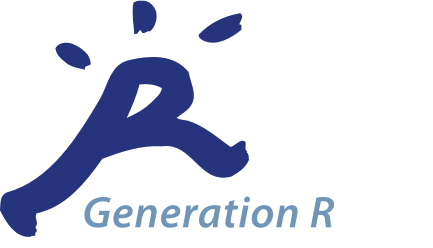-
measure Early Adolescent Temperament Questionnaire (EATQ)
Study: Generation R Mode of collection: SelfAdministeredQuestionnaire Available measurements: Main Cohort 13-14 yearsThe Early Adolescent Temperament Questionnaire (EATQ) is designed to specifically tap experiences common to adolescents, and is available in self- and parent-report formats. It assesses temperament and self-regulation via adaptation of scales used in studies of children and adults. It has 10 subscales: Activation Control (the capacity to perform an action...Created May 3, 2023 • Updated May 3, 2023 -
measure Early Adolescent Temperament Questionnaire (EATQ)
Study: YOUth Mode of collection: SelfAdministeredQuestionnaire Available measurements: Child and Adolescent 9 years 12 yearsThe Early Adolescent Temperament Questionnaire (EATQ) is designed to specifically tap experiences common to adolescents, and is available in self- and parent-report formats. It assesses temperament and self-regulation via adaptation of scales used in studies of children and adults. It has 10 subscales: Activation Control (the capacity to perform an action...Created March 28, 2023 • Updated March 30, 2023 -
measure Brief Barrat Impulsivity Scale (Brief-BIS) and risk behavior (substance (ab)use)
Study: YOUth Mode of collection: SelfAdministeredQuestionnaire Available measurements: Child and Adolescent 9 years 12 yearsThe Barratt Impulsivity Scale (Brief-BIS), a self-report measure, is one of the most commonly used scales for the assessment of the personality construct of impulsiveness. It measures 3 theoretical subtraits, namely, attentional, motor, and non-planning impulsiveness.Created March 28, 2023 • Updated March 30, 2023 -
measure Functional MRI Inhibition experiment scan
Study: YOUth Mode of collection: MeasurementsAndTests MRI Available measurements: Child and Adolescent 9 years 12 yearsFunctional MRI acquired while subjects performed a task. The task aims to measure performance and brain activation during actual stopping as well as during the anticipation of stopping. Trials begin with the presentation of a cue (0, * or *), representing the stop-signal probability (0, 22 and 33% respectively). Permanently visible are three horizontal...Created March 28, 2023 • Updated March 30, 2023 -
measure Strengths and Difficulties Questionnaire (SDQ)
Study: YOUth Mode of collection: SelfAdministeredQuestionnaire Available measurements: Baby and Child 3 years 6 years
Child and Adolescent 9 years 12 yearsThe Strengths and Difficulties Questionnaire (SDQ) is a brief questionnaire for assessing the psychosocial adjustment of children and adolescents. Versions are available for parents and teachers of 4- to 16-year-olds, and a nearly identical version can be completed independently by 11- to 16-years olds. The SDQ differs from related instruments in that it...Created March 28, 2023 • Updated March 30, 2023 -
measure Delay Discounting - hypothetical
Study: YOUth Mode of collection: MeasurementsAndTests Behavioral/cognitive task Available measurements: Child and Adolescent 9 years 12 yearsThe Delay Discounting task is the most widely used paradigm to measure the capacity to wait for a hypothetical monetary reward in children between 8-18 years old. A child is given a series of option between a variable immediate monetary reward and 10 Euros after a certain delay. The delay of the 10 Euro reward varies between 2, 30, 180, or 365 days. Each...Created March 28, 2023 • Updated March 30, 2023 -
measure Functional MRI Inhibition experiment behavior
Study: YOUth Mode of collection: MeasurementsAndTests Behavioral/cognitive task Available measurements: Child and Adolescent 9 years 12 yearsBehavioral output file accompanying the functional MRI acquired while subjects performed a task. The task aims to measure performance and brain activation during actual stopping as well as during the anticipation of stopping. Trials begin with the presentation of a cue (0, * or **), representing the stop-signal probability (0, 22 and 33% respectively)....Created March 28, 2023 • Updated March 30, 2023


